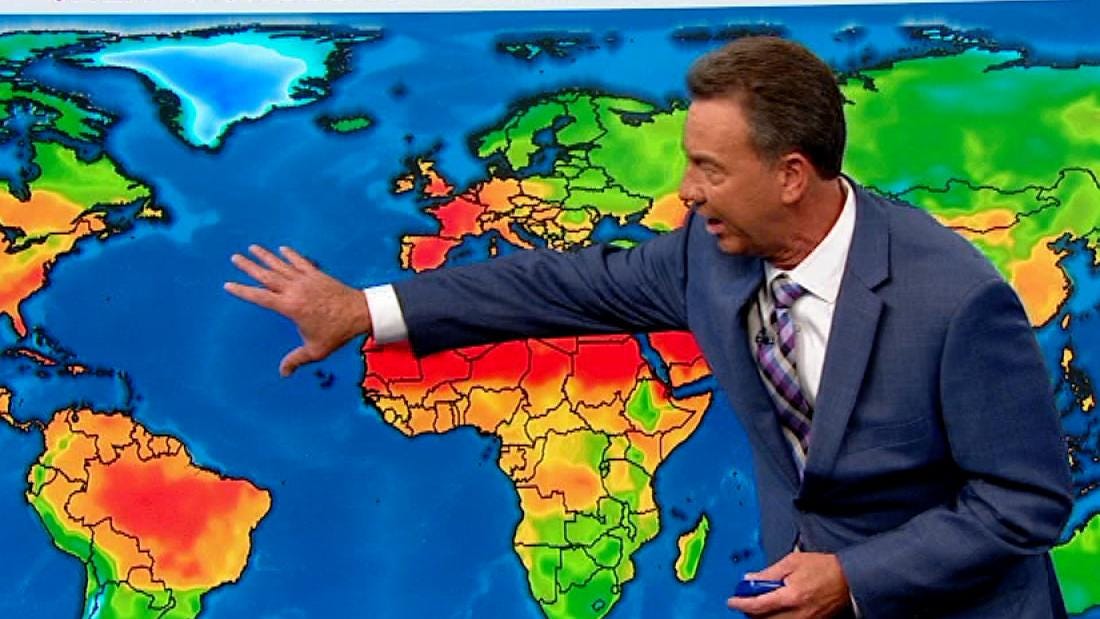We dip into our archives this week to return to the topic of climate change and health. First published in Down to Earth on November 25 of 2019, I wanted to return to this topic because it is an important thing to keep in mind as we all swelter through the intense heat that has gripped much of North America and Europe. I have posted previously about climate change and health, as well as the effects a warming world has on mental health. I hope this post brings something new for you.
How climate change affects health in the US (and elsewhere)
A recent study in the United States (US) comprehensively links climate change and costs associated with public health. Researchers looked at both, national and locally-collected health data on ten types of climate-related events that occurred in the United States in 2012.
The study, published in GeoHealth, calculated the health burden of increased heat and more severe weather of these ten events, which resulted in 917 deaths, over 20,000 hospitalizations, and almost 18,000 cases of emergency department care. The researchers estimated the total costs of these ten events to be $10 billion in 2018 US dollars.
Most studies of this kind concentrate on a relatively limited geographic region and are usually limited to a single matter of health or disease, such as malaria. This study, however, looked at diverse regions, from subtropical coasts to alpine mountains, and differing climate-related phenomena.
Researchers examined the costs of ozone air pollution in the state of Nevada, health-related effects of wildfires in Colorado and Washington state, extreme heat in Wisconsin, the mosquito-borne West Nile virus in Texas, tick-borne Lyme disease in Michigan, extreme weather in Ohio, health-related effects of Hurricane Sandy in New Jersey and New York, algal blooms on the coast of Florida, and the occurrence of allergy-inducing oak pollen in North Carolina.
The study looked at data from 2012, and since then, conditions have continued to worsen. Globally, the five hottest years on record have been in the last five years.
This study is only the most recent that finds detrimental health effects from the consequences of climate change. In 2005, the World Health Organization (WHO) estimated that climate change claimed 150,000 lives annually, due to climate change-exacerbated heat waves, altered transmission of infectious diseases, and malnourishment due to crop failures.
In the US, health costs are usually not tallied along with other costs due to climate change. The costs of increased and lengthier hospital stays, more medications, lost wages due to illness, are not added to the costs of damaged crops and flooded homes.
The researchers who conducted this study estimate that if health costs were considered along with those of infrastructure and agriculture, the estimates of cost would go up by 26 per cent.
Climate change and vector-borne diseases
For health, climate change is a catchall detrimental factor, increasing hazards across the board. According to the Centers For Disease Control and Prevention, the national public health institute in the US, climate change increases the occurrence of vector-borne disease by bringing earlier springs, longer and hotter summers, and milder winters, giving mosquitos and ticks, the organisms that transmit these diseases, better conditions to thrive.
In the United States, the transmission of Lyme disease is also aided by increased precipitation and humidity. Climate change can worsen respiratory problems. Longer summers can increase the number of weeks or months of pollen season, which can exacerbate asthma
.
Higher temperatures also mean more ground level ozone, which can lead to diminished lung functioning, more asthma, and even increase the number of premature deaths. These same respiratory impairments can also be affected by smoke from wildfires, which are on the increase due to climate change.
Over the course of a single lifetime, the US has experienced an increase in the number of heavy precipitation events, defined as days with precipitation in the top one per cent of all days with precipitation. These events of course lead to more frequent and severe flooding. In the US, floods are the second deadliest weather hazard after heat.
According to the WHO, malaria may prove to be the vector-borne disease that is most exacerbated by climate change worldwide. Scientists have long studied the link between extreme weather events and malaria outbreaks in India.
High monsoon rainfall and high humidity, which enhanced mosquito breeding, have been associated with malaria epidemics in the river-irrigated Punjab region. Malaria increases by 500 percent in the year after an El Niño.
News of the week
Conservation News, along with other sources, gives us an update on the Amazon, with the latest satellite imagery showing that an area six times that of New York City was cleared in the Amazon rainforest in the first six months of this year. Under president Jair Bolsanaro, who has weakened environmental laws and cut the budgets of Brazil’s environmental agencies, the deforestation of the Amazon has soared.
Fauna and Flora International announced earlier this month that an expedition to West Papua found a rare, blue orchid that has only been identified since 2016. The orchis is only found on Waigeo, a small Indonesian island north of West Papua.
Wetlands International, working with the World Wildlife Fund for Nature and the International Union for Conservation of Nature has just published The State of Mangroves in the Western Indian Ocean. The news is mixed. The rate of mangrove destruction has slowed in recent years, but it is still ongoing. The wetlands organization also issued the Report on the Conservation Status of Migratory Waterbirds of the East Asian – Australasian Flyway
And just when you thought that you couldn’t hate Joe Manchin any more than you already do, the West Virginia Senator now opposes climate related protections for endangered species.
For more environmental science & news follow me on Twitter @EcoScripsit.





